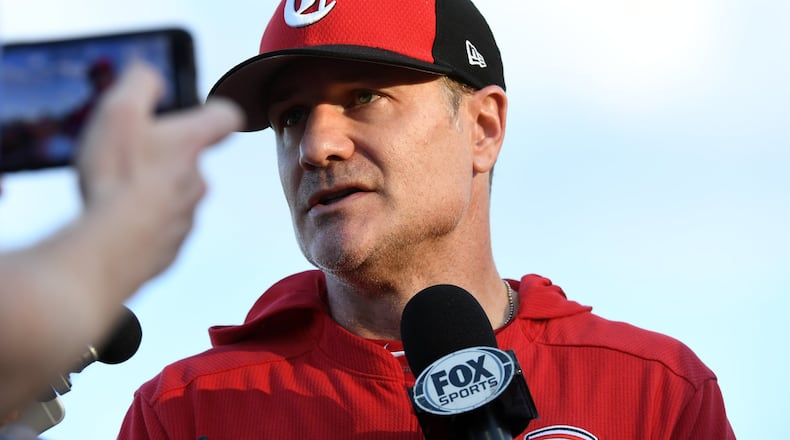»ASK HAL: Sorting out the crowded Reds’ outfield
Francona broke down the 60 or so players that every team brings to spring training. The Indians started with 63 players, including 23 non-roster invitees. The Reds started with 63 players, 21 of which were non-roster.
The first group is the younger players eager to impress.
The second group are veterans trying to win a job.
The third are regulars getting ready for the season.
“You don’t take the guys with the highest batting averages,” Francona said. “It doesn’t work like that. If you do it by batting average (or any other result measurement), you will make a lot of mistakes. The biggest concern is the middle group. You don’t look at batting averages or ERAs. You look at bat speed and arm strength. Is a pitcher’s velocity the same?”
»RELATED: First African-American to play for Reds dies at 94
Bell reinforced it in a conversation about Jesse Winker, who has a .132 batting average while the other outfielders, including Phil Ervin and Nick Senzel are all above .300.
“I’m not concerned at all,” Bell said. “I wish I had a better way to explain why the I don’t look to much into spring training results. Over the years I just stopped putting too much emphasis on the results.”
A veteran’s track record plays into some of the decision making but for a player without a lessor number of games under their belt, there are other criteria to consider.
An example is the Reds choice for Opening Day starter. The Reds brought in three veteran starters to fill the rotation that had holdovers Luis Castillo and Anthony DeSclafani.
It was a different spring for Castillo because he had the freedom to work on pitches without being concerned about earning a job. It worked out for the right-hander when he was named Opening Day starter with an ERA of 12.46. Castillo got the nod over DeSclafani (1.93), Sonny Gray (0.oo) and Tanner Roark (2.29).
The mystery remains about the Reds bench, which includes veteran non-roster players Derek Dietrich and Jose Iglesias.
Dietrich bats left handed and can play the corner infield positions, second base and the corner outfield. He is hitting .270 with three home runs. Iglesias is a true shortstop and has a .364 batting average.
Also in the mix is Kyle Farmer, who has played everywhere, including shortstop and catcher. He is hitting .385 and has turned in some fine fielding plays. He has options left.
“There are going to be some hard decisions that could go to the last day,” Bell said. “We added a lot of depth.”
About the Author
